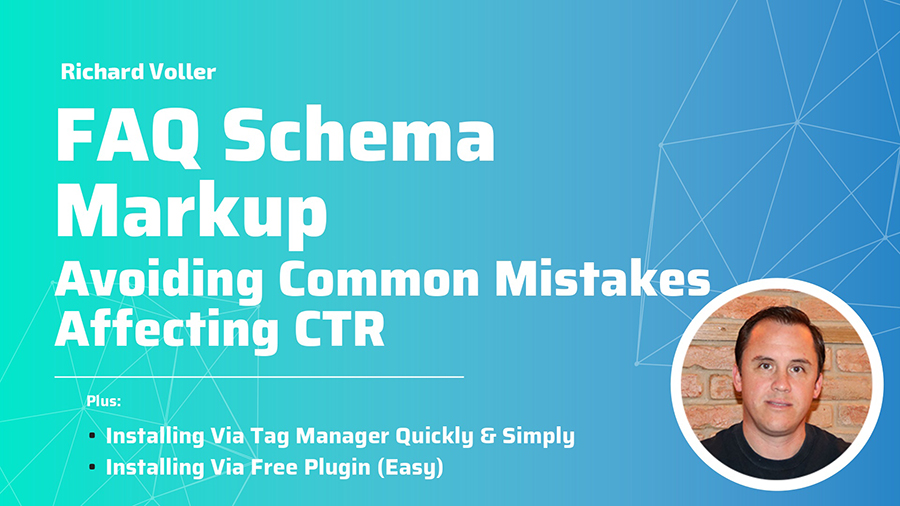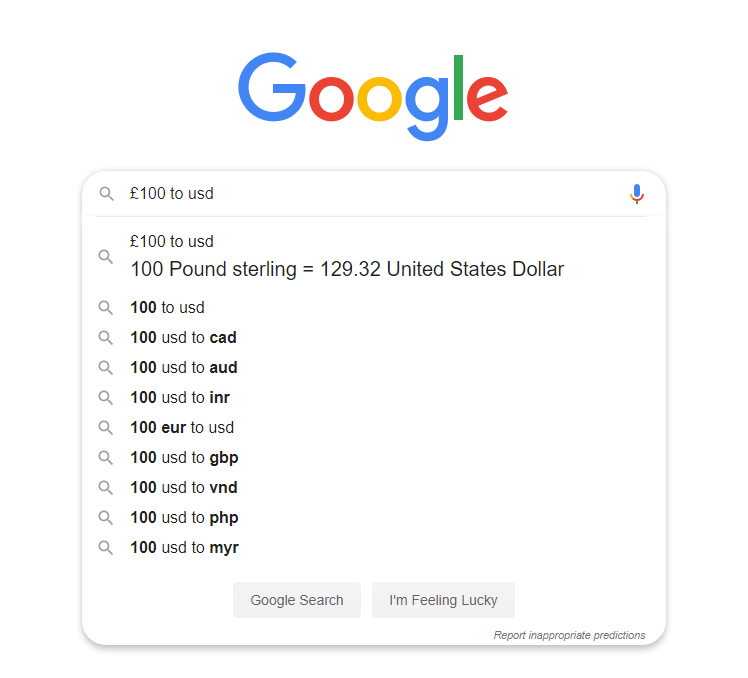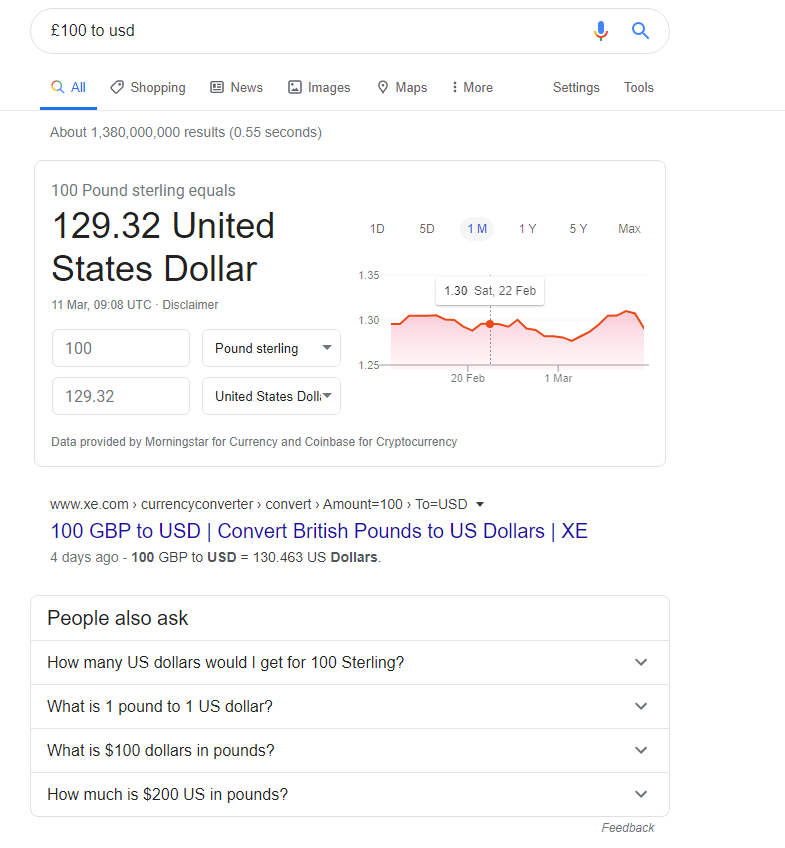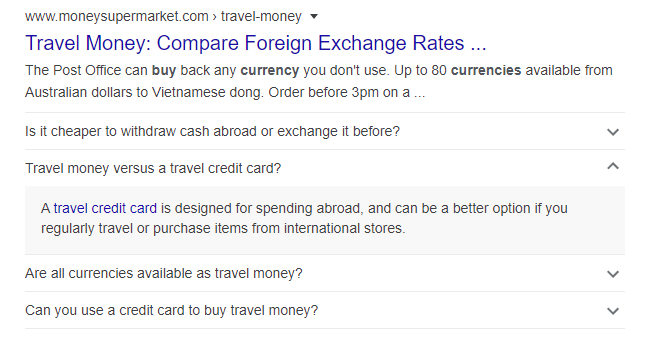Guide To FAQ Schema Markup Best Practices And Installation

Table Of Contents
Fighting Back From Lowered CTR & Zero Click Searches
As SEOs, we are often dismayed at the SERP landscapes, as we now see, over 50% of searches result in what is known as ‘Zero Click’. Zero Click searches are where the searcher gets the answer they require directly from the SERP without needing to visit a website.
For instance, currency conversion. If I was to enter £100 to USD the answer is right there at the top of the SERP, in fact the answer will also appear in the predictive search.


In fairness to Google, this kind of search is Good for the user as if they just want a quick answer then there they have it.
Featured snippets have been helping publishers grab ‘position 0’, while Schema is not nessesarily required for the featured snippet, it does give Google a “heads up” to the data that is contained within the page. Now, in 2020 Position 0 really is position 1 because Google no longer shows the featured result within the first page. However, between what seem like an ever increasing measurement of Ads, in addition to Featured Snippets and ‘People Also Ask’ sections of the SERP we are battling to expand on our share of the SERP Real Estate.
Enter FAQ Schema Markup. Correctly used FAQ Schema can help you regain precious SERP real estate as well as drive traffic to highly relevant pages within your website. That said, used in the wrong way, you can actually see a rise in impressions and a rapidly reducing CTR. In the rest of this article I will show you how to effectively markup your website so that you stand the best chance of having your FAQ’s displayed within the SERP, as well grabbing the precious onto site clicks.
What Is FAQ Schema Markup?
FAQ Schema Markup is a form of structured data that allows your webpage that contains one or more Questions with a clear provided answer to benefit (potentially) from Rich results within the search engine results. FAQ Schema also (crucially) allows the placement of certain HTML within your answer.
Upon doing a search in Google, if there is a website with the correct Schema Markup, that Google feels is relevant / worthy enough of showing within the SERP then it will look something like this:

Schema markup is still a hugely underused functionality. As SEOs, we should be striving to utilise it at every available opportunity. The reason for this is that straight away it is aiding the search engines to quickly understand the data that is within your page.
FAQ Schema is one that is available to us that gives us one of the most significant opportunities to grab precious SERP real estate. Yet, even now, after the functionality has been available for quite some time, websites are still not utilising it to the best of their abilities.
However, in a rush to implement FAQ Schema markup without thinking about the content, answers and links we are creating, you can indeed see a drop in CTR.
I first started looking seriously at FAQ Schema in around June 2019. I implemented the markup on a large scale for a client in the financial industry. But, in the rush to implement it on lots of relevant pages (they are a very big site), we didn’t make full use of the functionality in all cases. The client was very excited about the possibility but even they admit now that it was rolled out in a rush without really planning how they can best utilise all of the available functionality.

After reading Lily Ray’s article at Path Interactive back in July 2019 we readdressed the Schema markup to contain larger answers, with links contained within them to intent relevant areas elsewhere on the site.
Before the links and answers were re-addressed we too saw a large spike in impressions, but CTR dropping right off. Of course, thinking about this logically it was bound to happen because we were effectively increasing our SERP real estate, but at the same time feeding the CTR / Zero Click monster because they had no reason to click through.
Testing over the last 7 to 8 months, we have certainly found that longer answers with 1 to 2 links provide the best impact on CTR. It should be noted that answers need to be of real quality with links placed where possible with a real reason for a user to want to click through.
As an example, the screenshot below is from Euro Change. While they have taken the steps below to add in FAQ Schema, it is not really using (in any of the dropdowns) the full HTML capabilities that are available to us to place in the schema.
So in effect, doing this could potentially increase your impressions yet drastically reduce your CTR. The reason being is that they have a question answered but no real need or will to click through.
If this was me, I would bold the £2500 and link the words “order online” to their order page. You cannot be spammy with this though as Google dictates that the FAQs cannot be used as an advertisement. But to me, offering the order page is the natural progression. Even a click to call on functionality for more localised results / phone orders works well.

Lets now take a look at a page which has been marked up with HTML within the Schema.
This result from Money Supermarket which happens to be directly below Euro Change have added in links on 2 of there questions. This in my opinion is a good balance. Not overly spammy by placing links in every question, but they have placed them in searches where there could be some level of commercial interest.

Real thought has to be given to the text you are placing in your FAQ Markup while taking into account the user intent of the search, and whether they would be interested in a reference to another page on your site or simply want a factual answer.
I would say it is just as important to provide the factual answers as well as the potential click through opportunities in order to create an authoritative content hub. You also need to take into account that these are also all touch points for your brand.
As with anything in the SEO world, it is testing, and improvement that will ensure that implementing the schema markup is the right thing for your webpage. Because of the way that FAQ Schema does reduce your CTR in favour of enhanced visibility on the SERP, this is not always the best thing for your business. It has to be taken on a case by case, term by term basis.
What Are The Benefits Of Using FAQ Schema?
Correct use of FAQ Schema Markup allows the website owner to not only regain lost SERP Real estate but to drive traffic to relevant pages within the websites as it will enable the use of links and other HTML in the schema markup. This provides a distinct advantage over the QAPage Schema markup, which does not allow the use of links and Html within the answers.
As always, there are rules which Google insist upon when implementing the FAQ markup. These include:
1. Ensuring the content in the markup is 100% the same that is displayed on the webpage. The page must of answered the question and not allow scope for users to submit their own answers. If this is the case the you should be using the QApage markup instead of FAQ.
2. FAQs must not be used as advertisements.
3. All the FAQ content must be visible to the user on the source page.
You can get full list of Google’s content guidelines here.
If you don’t follow the guidelines for this, you do run the risk of a manual penalty. Of course, as with most things in SEO, you expect to see the functionality eventually be used and abused. But hopefully, with the threat of penalties being evident, this should be kept to a minimum.
How To Install FAQ Schema On A Website
To be clear, I am not a coder. While FAQ Schema is indeed coding to an extent, it’s super easy and with a basic understanding of what you are doing, you will have no problems. In the video, I show 2 methods of installing FAQ Markup. The first is using code and Tag Manager (my preferred choice) and the second is via a free plugin. Yes, there are many available, but I like Rank Math for all its other functions and its super handy for smaller websites that the feature is built-in.
1. Intro – Why people are doing FAQ Schema Markup wrong.
2. (2:43) Examples of sites doing it right, and doing it wrong.
3. (7:14) How to VERY simply markup your page with FAQ Schema and Tag Manager. (My preferred method).
4. (16:57) How to use a free plugin to create correctly marked up FAQ Schema.
As mentioned in the video, I used 2 external tools for the 2 different processes.
1. Saijo George’s FAQ Schema Generator
Of course the standard testing suite from Google:
There was 1 process which I forgot to mention in the video and that was to request indexing of your url (once it has been marked up) through Google Search Console. More often than not, if Google like your markup then it will be shown relatively quickly.
I did mention in the video that I am also producing another video on how to add analytics tracking for the links contained within the FAQ Schema without the use of UTM tracking which is designed for external links only. I am in the process of making this video at the moment and will publish that soon.
